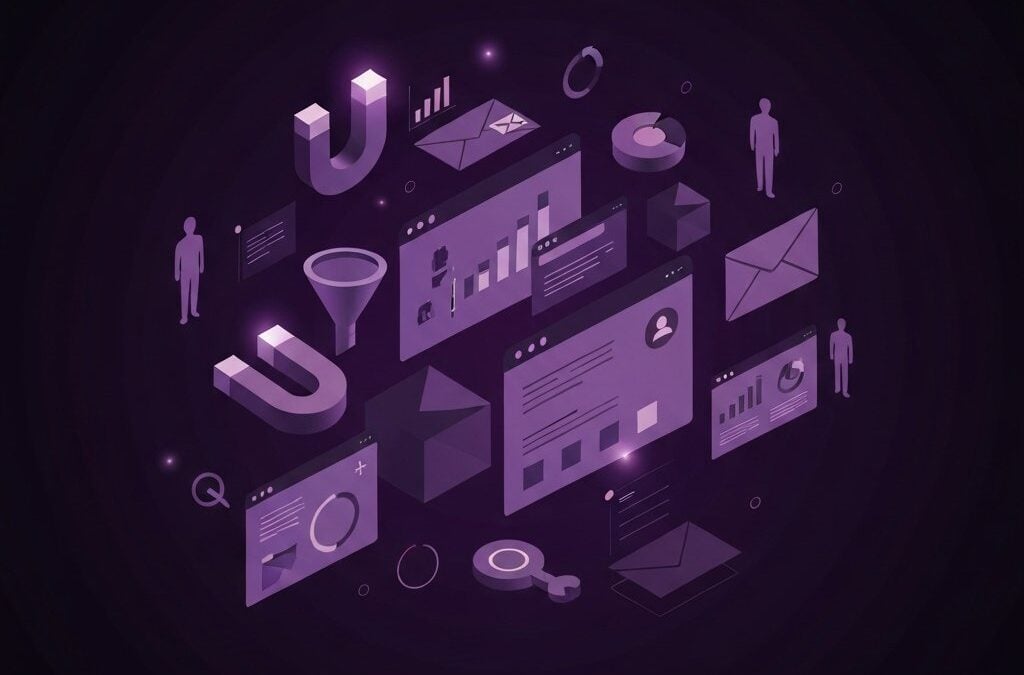Understanding the Role of AI in Modern Marketing
Artificial intelligence (AI) has transformed marketing, shifting the focus from guesswork to data-driven decisions. Today, AI is used in every aspect—from personalized content recommendations to predicting consumer behavior. Marketers are now utilizing AI tools to analyze consumer data, segment their audiences, and create personalized campaigns that hit the bullseye every time. This paradigm shift means marketers are no longer confined to generic strategies.
Imagine a scenario where your campaign automatically tunes its tone and message based on real-time data. Sounds futuristic? It’s happening now. AI helps unlock insights from massive datasets, making it easier to predict which messaging will resonate best with your target audience. As marketing expert Sandra Lee puts it, “When AI is in the driver’s seat, every decision becomes a well-calculated move.” The result is a campaign that’s both dynamic and responsive.
The Evolution of Marketing Techniques with AI
Marketing has come a long way from traditional print ads and TV commercials. Today, AI has enabled marketers to optimize their efforts in real time. The evolution is evident as even small businesses are leveraging AI-powered analytics and automation. These tools have taken inscrutable data and turned it into a gold mine of customer insights. Here are some of the most notable benefits:
- Personalization at scale
- Enhanced customer segmentation
- Predictive analysis that steers strategy
- Real-time decision making
- Greater ROI on ad spend
When you deploy AI, it learns from every click and curve, adapting constantly to provide marketers with the next best action. This evolution, driven by smart algorithms and machine learning, elevates every marketing campaign to an entirely new level.
Setting Clear Objectives and Key Metrics
Before diving headfirst into AI tools, it’s crucial to set clear objectives. Decide on what you want to achieve. Do you want to boost lead generation, increase customer retention, or drive sales growth? Your objectives should be aligned with measurable key performance indicators (KPIs) so you can track progress over time. Remember, a strategy without clear goals is like a compass without a needle.
Enumerating Your Goals
When setting your objectives, keep them realistic and measurable:
- Increase website traffic by 20%.
- Enhance conversion rates by 15%.
- Boost the number of qualified leads by 25%.
- Improve customer retention rates by 10%.
- Enhance brand engagement with dynamic content.
Each of these objectives should be paired with specific KPIs, so you know exactly when you hit a milestone. For instance, if you are targeting website traffic, you can look at unique monthly visitors or engagement per session. It also pays to compare these results with historical data for accuracy.
Comparison Table: Objectives vs. KPIs
| Objective | Key Performance Indicator (KPI) |
|---|---|
| Increase website traffic | Unique visitors, session duration |
| Enhance conversion rates | Conversion percentage, click-through |
| Boost qualified leads | Form submissions, lead quality score |
| Improve customer retention | Repeat purchase rate, churn rate |
| Enhance brand engagement | Social shares, time on site |
The Power of Data-Driven Insights
Data is the lifeblood of any robust marketing AI strategy. Without it, you might as well be throwing darts blindfolded. Detailed analytics help interpret consumer behavior, enabling you not only to understand your audience but also to predict what they might do next.
Integrating Data Collection and Analysis
Incorporate data from multiple sources to paint a complete picture of customer behavior. Use tools like Google Analytics and other advanced platforms to gather both qualitative and quantitative insights. While it might seem like a lot to handle, these platforms provide intuitive dashboards that simplify complex data sets. To optimize your strategy, break your analysis down into manageable segments—demographic data, behavioral trends, purchasing habits, and feedback metrics.
As renowned strategist Andrew Collins states, “Data is your best friend.” Yet, no matter how extensive your data is, the key to success lies in action. Analyze trends, run A/B tests, and modify your campaigns based on performance. This agile methodology is central to an effective AI strategy. Moreover, using data also assists in identifying weak spots and tailoring solutions accordingly.
Creating a Cohesive Data Strategy
A cohesive data strategy involves continuous monitoring and rapid adjustments. Discuss with your team what is working and what isn’t. Foster an environment where data speaks louder than assumptions. Make it a habit to review your metrics weekly or monthly to ensure your strategy remains aligned with your objectives. With this approach, you can pivot swiftly in a market that never stands still.
Essential AI Tools to Boost Your Strategy
To craft an ultimate marketing AI strategy, you have to choose your tools wisely. The marketplace is brimming with AI-driven platforms, each offering unique features to help you streamline your campaigns. It’s important to select tools that align with your goals.
Top AI-Powered Marketing Tools
Below are some essential AI tools:
- Chatbots: Enhance customer engagement instantly.
- Predictive Analytics Platforms: Forecast trends and consumer behavior.
- Customer Relationship Management (CRM) Systems: Streamline and personalize customer interactions.
- Programmatic Advertising Tools: Optimize ad spend by targeting the right audience.
- Natural Language Processing (NLP) Tools: Improve content creation and messaging.
Each of these tools leverages the power of AI to help you gain a competitive edge. For instance, chatbots offer immediate solutions to customer queries while a well-integrated CRM collects data that can be used to create a truly personalized experience. Marketing veteran Lisa Tran mentions, “When you combine these tools, each component amplifies the other, eventually creating a comprehensive and ultra-efficient system.”
Table: AI Tool Comparison
| Tool Type | Core Function | Notable Benefit |
|---|---|---|
| Chatbots | Automated customer support | Real-time engagement |
| Predictive Analytics | Forecast future trends | Data-driven decisions |
| CRM Systems | Customer data management | Enhanced personalization |
| Programmatic Advertising | Automated ad targeting | Optimized ad spend |
| NLP Tools | Content creation and analysis | Improved messaging |
For more details, visit HubSpot and Moz.
Step-by-Step Implementation Plan
A solid AI-based marketing strategy should always be supported by a clear, step-by-step implementation plan. This plan not only helps in executing the strategy effectively but also makes it simpler to adapt to changes on the fly.
Step 1: Research and Audience Segmentation
Start by conducting thorough market research. Identify your primary audience. Create buyer personas informed by demographic, geographic, and psychographic data. Use platforms like Google Trends or SEMrush to deeply understand your target market. With detailed personas in place, tailor your messaging to appeal to your audience’s unique needs.
Step 2: Define Your AI-Driven Goals
Building on your earlier objectives, clearly outline how AI can help achieve these goals. If increasing customer retention is a key aim, select AI tools that monitor customer interactions and automate personalized follow-ups. Set benchmarks so that you can gauge your progress over time. As renowned marketer Rita Gomez noted, “Clear goals are the spark that ignites consistent results.”
Step 3: Leverage the Right Tools
With your goals clear, put your AI tools into action. Start with a free trial or demo of various platforms to see which ones best fit your workflow. Then, integrate them into your existing systems. Tools like Google Analytics and Salesforce are excellent starting points.
Step 4: Optimize and Iterate
Once everything is in motion, continually monitor your metrics to see what works and what needs improvement. Use A/B testing and performance analytics to tweak your campaigns regularly. With real-time feedback, you can pivot strategies quickly. Each adjustment brings you closer to an optimized marketing system.
Step 5: Document and Share Insights
Document your findings and share them with your team. Keeping an organized record fosters a culture of continuous improvement and provides a valuable resource for future campaigns. Every marketing effort offers lessons that help refine your overall strategy.
Overcoming Common Challenges in AI Marketing
Implementing AI in marketing does present challenges such as data privacy, integration issues, and the need for constant optimization. These obstacles can be managed with a proactive, strategic approach.
Data Security and Privacy Concerns
In an era of increasing cyber threats, protecting customer data is essential. AI tools must adhere to strict guidelines to ensure data is handled securely. Cybersecurity expert Mia Hernandez reminds us that “The trust of your audience is invaluable.” Encrypt data and perform regular audits while complying with data protection regulations.
Integration with Existing Systems
Seamless integration of AI tools with your current marketing systems might be challenging. Involve both IT and marketing teams early in the process to ensure alignment and smooth operation. Success stories abound for brands that achieved cohesive system integration.
Constant Algorithm Changes
AI algorithms evolve continuously. Stay updated with the latest trends by joining industry webinars and following trusted sources like Forbes. Embrace continuous learning to maintain a competitive edge.
Crafting a Responsive Strategy That Adapts
Your marketing AI strategy should be flexible and ready to adapt to market shifts. Leveraging AI means your system can automatically adjust campaigns in real time as new data comes in, ensuring your marketing efforts remain effective.
Dynamic Campaign Adjustments
Set up systems to monitor real-time performance. For example, if a digital ad overspends without satisfactory results, adjust its messaging or targeting on the fly. Dynamic adjustments are key to maintaining efficiency.
Encouraging a Culture of Experimentation
Marketing is a continuous experiment. Encourage testing new ideas without fear of failure. Every experiment provides valuable insights, fostering an environment where data-driven innovation thrives. For further insights, visit our blog archive.
Bringing Creativity and Technology Together
The intersection of creativity and technology is where marketing brilliance happens. AI offers analytical strength, but human creativity connects with audiences on an emotional level. Balancing these elements results in campaigns that are both effective and memorable.
Merging Data with Storytelling
Blend data-driven insights with creative storytelling to create content that informs and emotionally engages. By combining these elements, you’ll produce personalized experiences that resonate deeply with your audience. As digital strategist Tony Reed says, “Numbers tell you what works, but stories make people care.”
Leveraging Social Proof and Community Influence
Social proof is a vital component of any marketing strategy. Use AI to monitor customer engagements, extract reviews, and identify brand advocates. Showcasing testimonials and case studies builds credibility, encouraging potential customers to engage with your brand.
Best Practices for Social Proof
- Encourage customer reviews and testimonials.
- Highlight measurable success stories.
- Utilize AI to analyze sentiment on social media.
- Create compelling case studies.
- Display user-generated content prominently.
Measuring Success and ROI Over Time
Regular monitoring is essential to gauge the success of your marketing AI strategy. Establish comprehensive dashboards to track metrics such as website traffic, conversions, and customer engagement. Use these insights to adjust strategies and maximize ROI.
Tips for Effective ROI Analysis
- Adopt multi-channel attribution models.
- Monitor both short-term gains and long-term brand equity.
- Include customer lifetime value metrics.
- Adjust budgets based on performance data.
- Continuously update benchmark goals.
Final Thoughts on Crafting an Ultimate AI Marketing Strategy
Crafting an ultimate marketing AI strategy is the result of innovative thinking, careful planning, and continuous refinement. This guide serves as a roadmap from setting objectives to leveraging social proof and ensuring data-driven decisions.
The fusion of creativity and technology drives marketing success. Embrace the power of AI, test relentlessly, and watch your marketing campaigns transform. Implement these strategies to secure a competitive edge in the digital age.
For additional tips on advanced AI integrations, explore expert insights at Marketing Insider Group and Neil Patel.
In Summary
Creating an effective marketing AI strategy involves:
- Establishing clear, measurable objectives.
- Leveraging data-driven insights.
- Utilizing advanced AI tools.
- Blending creativity with technology.
- Adapting continuously through data analysis.
Take these steps to harness the power of AI and elevate your marketing campaigns to new heights. Embrace innovation, nurture creativity, and let data guide every move for outstanding results.



